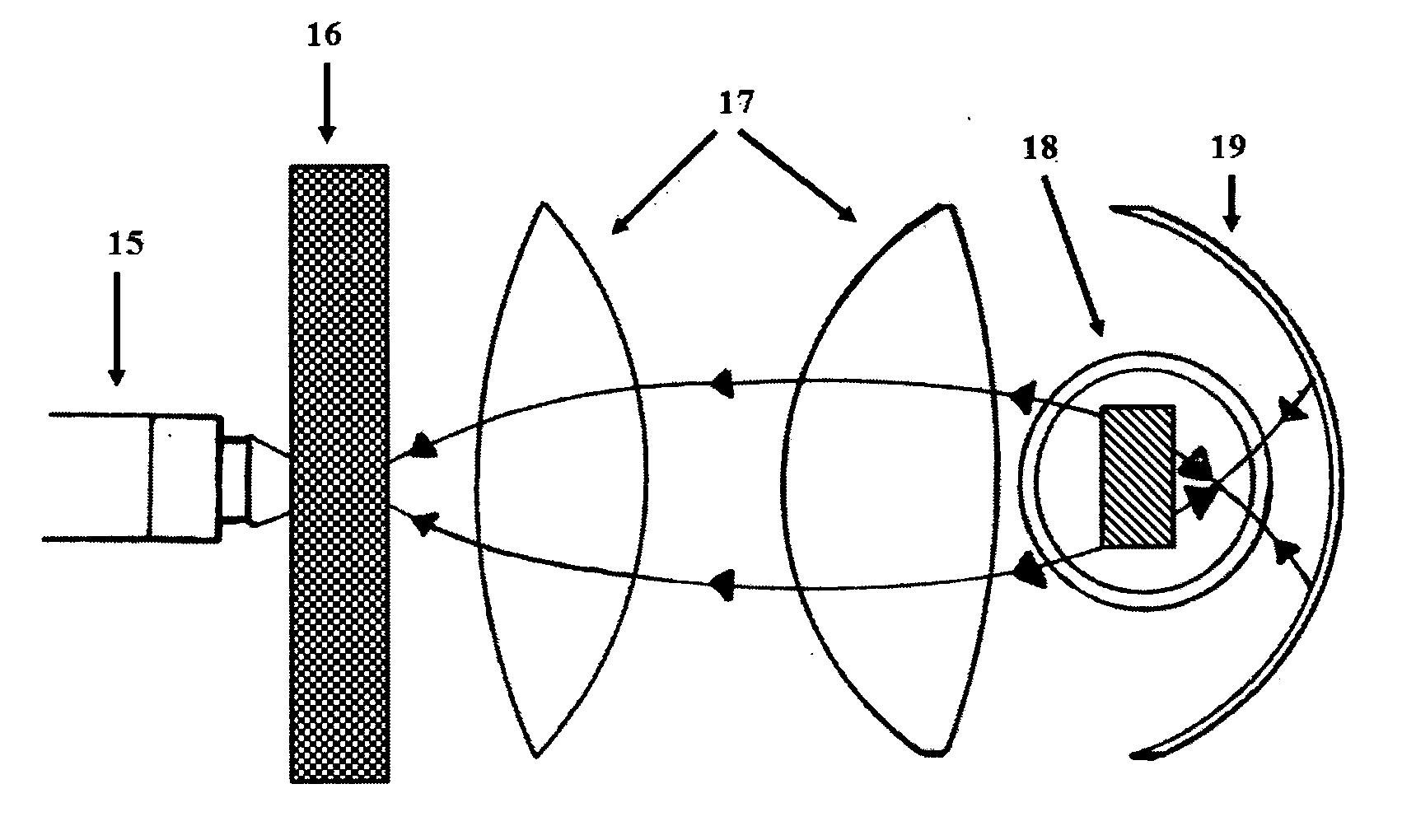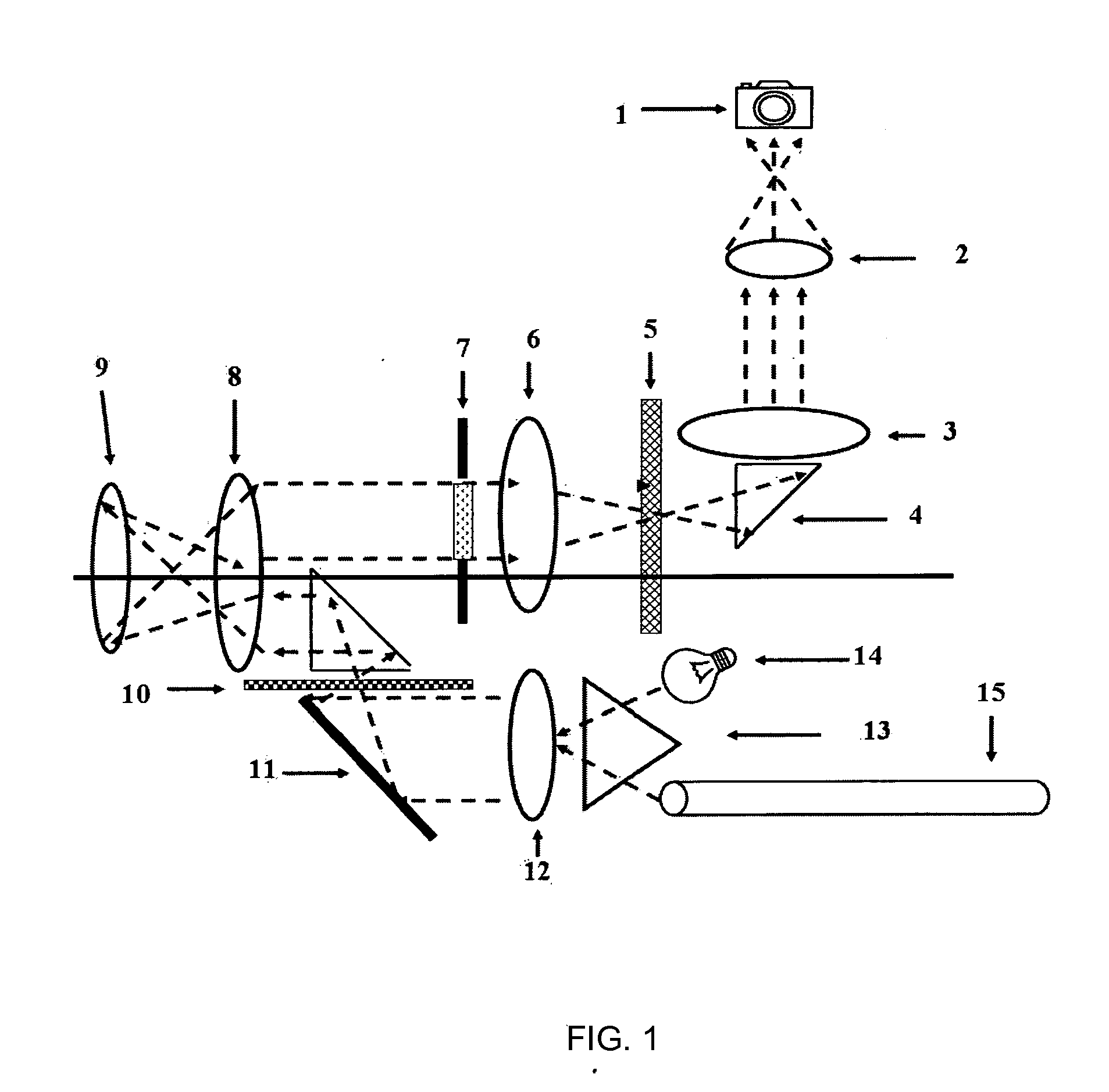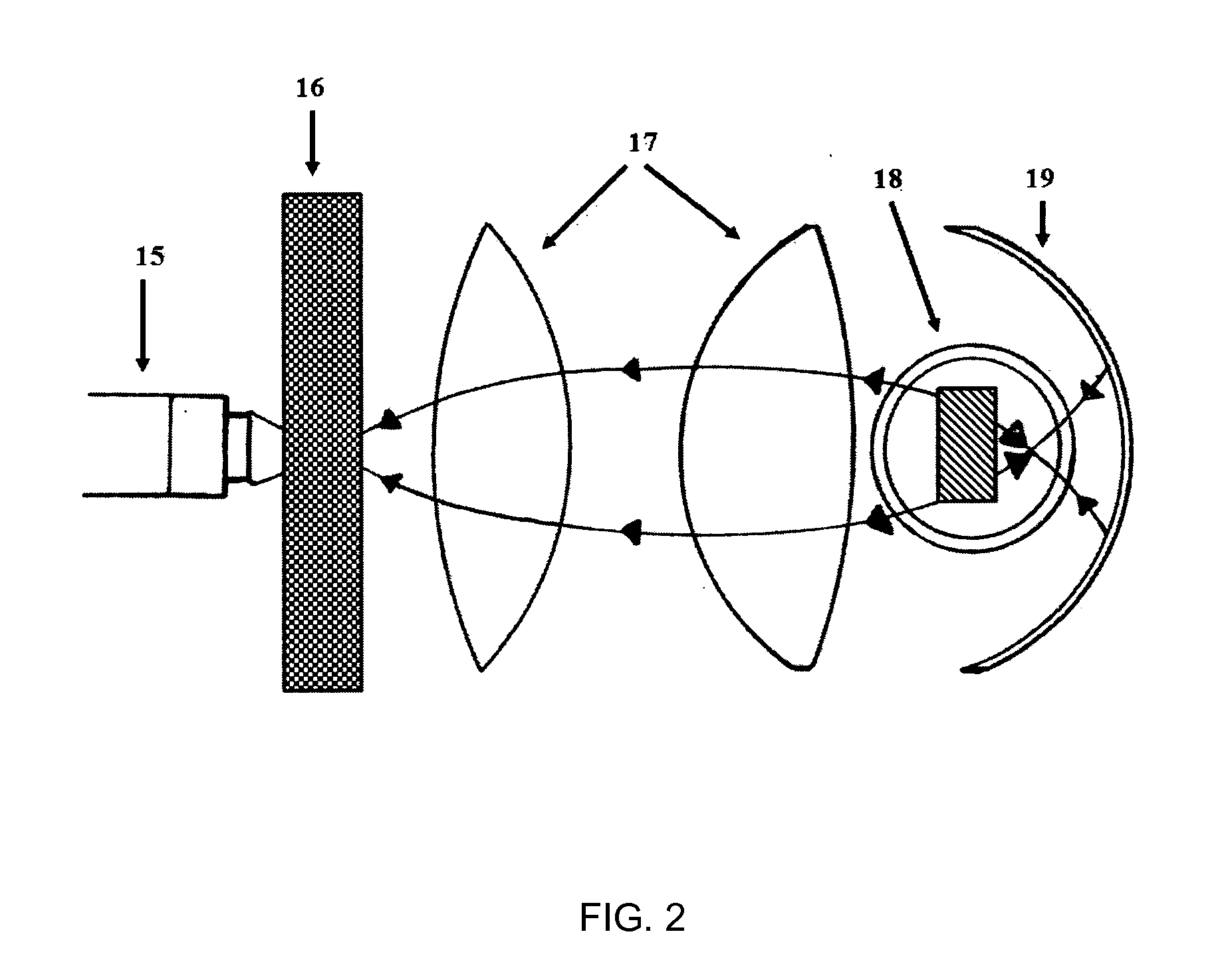Two-way photodynamic therapy stereo colposcope for diagnosing and treating diseases of the female genital tract
a colposcope and two-way photodynamic technology, applied in the field of medical imaging, can solve the problems of poor program, high event incidence, lack of new medical devices for diagnosis and treatment,
- Summary
- Abstract
- Description
- Claims
- Application Information
AI Technical Summary
Benefits of technology
Problems solved by technology
Method used
Image
Examples
example 1
Diagnosis for Human Papillomavirus Lesions Using a Fluorochrome: Fluorescein
[0093]The fluorescein isothiocyanate (FITC) fluorochrome was used in this case for several reasons:
[0094]This is widely used by ophthalmologists in fluoroangiographies (retina), and in local solution to see the corneal lesions. They use it with a lamp called “Actinic Lamp”, which has a cobalt filter and the emission spectrum is blue. This lamp used by them has no suppresor filters, we have chosen this fluorochrome since it has no adverse or toxic effects in humans.
Procedure:
[0095]Place the patient comfortably in lithotomy position. Study duration is 15-20 minutes.[0096]Introduce a plastic speculum to prevent unwanted reflections.[0097]Locate the cervix.[0098]Take vaginal pH (acidity or alkalinity): HPV infection often coexists with other bacterial or parasitic diseases so that the pH is alkaline.[0099]Take samples from endocervix with cervical brush.[0100]Take samples of ectocervix with Ayre ...
example 2
Photodynamic Diagnosis (PPD) for Human Papillomavirus Lesions Using a Photosensitizing Agent, 5-Aminolevulinic Acid (ALA)
[0111]Procedure:[0112]Place the patient comfortably in lithotomy position.[0113]Introduce a vaginal speculum.[0114]Locate the cervix.[0115]Clean the cervix and vaginal walls with normal saline.[0116]Apply the cream with the photosensitizer.[0117]Putting the patient at rest for 2 hours.[0118]Repeat the first three steps again.[0119]Select the frequency in the head variable linearity excitation filter to a range of 405 nanometers (blue-violet).[0120]Select the variable linearity suppressor filters at a range of 635 nanometers (red).[0121]Make direct observation or make video-photographic records with three-dimensional cameras mounted on the head.
[0122]When a patient is positive to photodynamic diagnosis (PPD), the lesion image is seen in bright red on a black background, if the patient is negative the black background is simply seen without red image...
example 3
Photodynamic Therapy (PPT) Application for Human Papillomavirus Lesions Using 5-Aminolevulinic Acid (ALA) Photosensitizing Agent
[0123]This application is performed depending on status, clinical judgment and light irradiation required power in three modes.
Procedure 1:
[0124]Place the patient comfortably in lithotomy position.[0125]Introduce a vaginal speculum.[0126]Locate the cervix.[0127]Clean the cervix and vaginal walls with normal saline.[0128]Apply the cream with the photosensitizer.[0129]Put the patient at rest for 4 hours.[0130]Repeat the first three steps back.[0131]Select the frequency in the head variable linearity excitation filter at a range of 685 nanometers (red).[0132]Depending on the lesion, irradiate it by keeping the stereocolposcope focus distance for the necessary time.
This procedure is recommended for small lesions.
Procedure 2:
[0133]Place the patient comfortably in lithotomy position.[0134]Introduce a vaginal speculum.[0135]Locate the cervix.[0136]...
PUM
 Login to View More
Login to View More Abstract
Description
Claims
Application Information
 Login to View More
Login to View More - R&D
- Intellectual Property
- Life Sciences
- Materials
- Tech Scout
- Unparalleled Data Quality
- Higher Quality Content
- 60% Fewer Hallucinations
Browse by: Latest US Patents, China's latest patents, Technical Efficacy Thesaurus, Application Domain, Technology Topic, Popular Technical Reports.
© 2025 PatSnap. All rights reserved.Legal|Privacy policy|Modern Slavery Act Transparency Statement|Sitemap|About US| Contact US: help@patsnap.com



